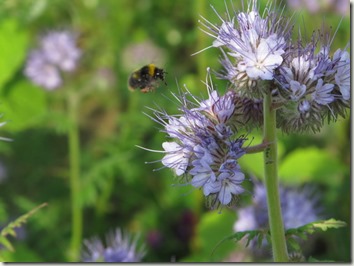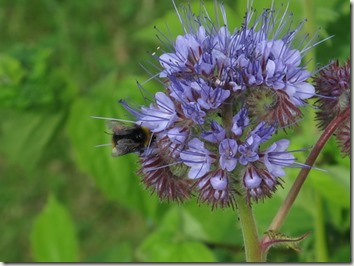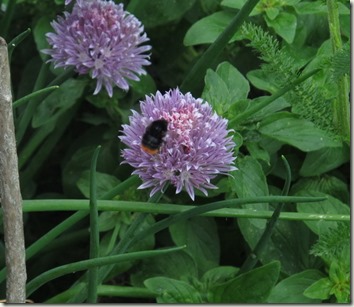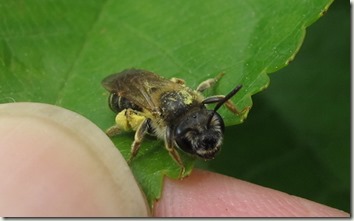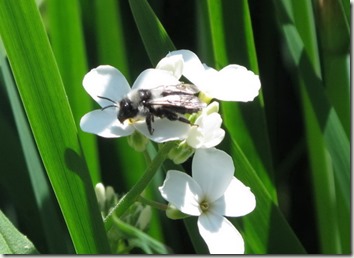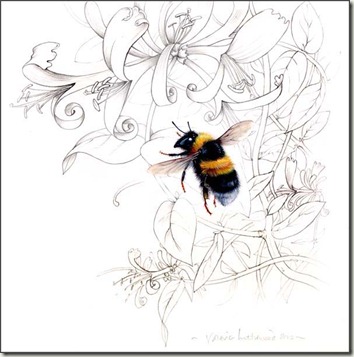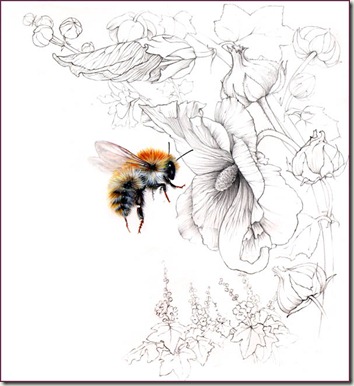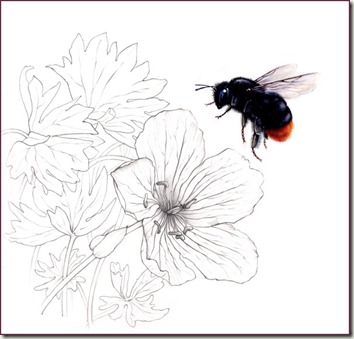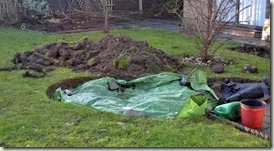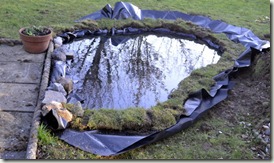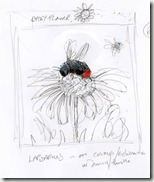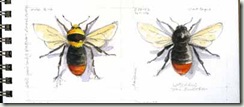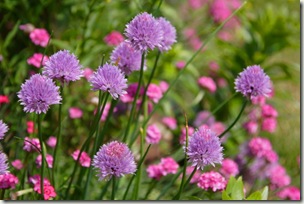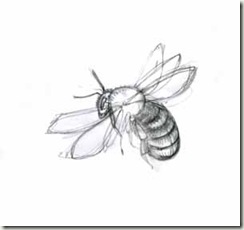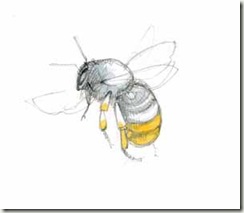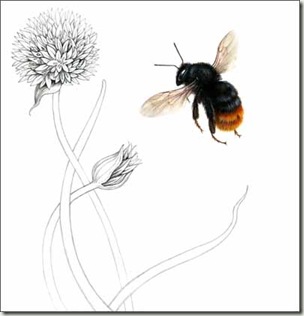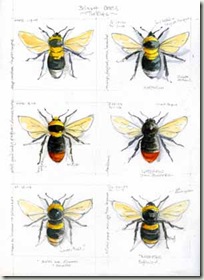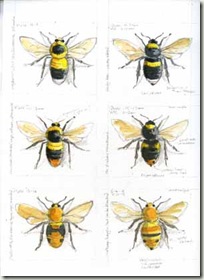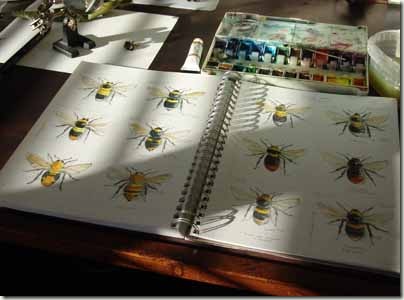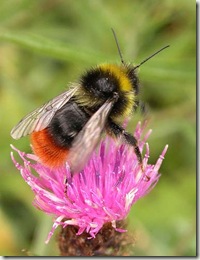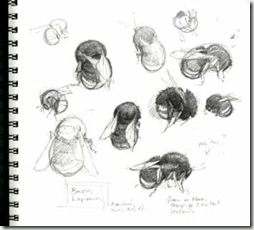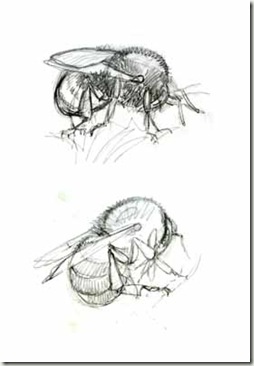It’s been quite busy in the Garden this last two weeks. At last some Bumble bees are out and about. Busiest have been the tiny Early Bumblebee (Bombus pratorum) workers. They have been everywhere on every flower they can manage. A patch of phacelia has just come into flower and because they are so small they find it very difficult to navigate the spiky stamens and have to adopt a head first, dive in strategy. Bigger bees have no problems.
A tiny Early Bumblebee worker contemplating a tricky landing through the long stamens of the phacelia. It is so attractive to them that they don’t give up easily
Head first, in-between the spikes.
This bigger heavier Carder bee (Bombus pascuorum) easily accessing the nectar of this lovely green manure plant which seeded down from last year.
And there are other bumble bees too:
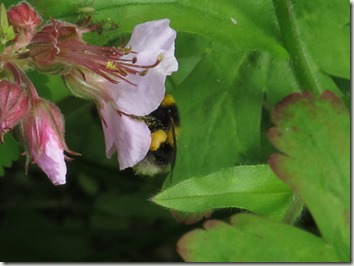
A Garden Bumblebee (B hortorum) worker on the hardy geraniums
A Tree Bumblebee (Bombus hypnorum) on the cotoneaster
A Box of Red Tailed Bumblebees
Just over a week ago now my very kind friend Matthew arrived at the door with a large buzzing plastic bag containing a tiny new Bombus lapidarius nest complete with about 10 cells 6 little workers and the magnificent Queen.
Matthew had been asked to move the nest and not wanting to destroy it asked if I could look after it. You bet!
The nest in the new box with some extra dried grass. You can see the large beautiful Queen at the top. They were very busy attending to the cells and so not too concerned about me and the camera. I think things might be different now!
So the nest and its few occupants have been (rather gingerly) transferred to a box which I hope will allow for a reasonable size colony and added to the bee house. It’s above the ground and hopefully out of the reach of mice.
I am very glad to report that there seems to be quite a bit of coming and going and at last the chive flowers which have been out for ages are getting some attention.
Little red tailed worker on the chives, The flame red colour of these new bees in simply stunning.
Anyway I have given them the best chance I can. They have flowers, shelter and someone looking out for them.
And not forgetting the solitary bees…. The mason bees have been filling up holes in the bee house and everywhere else. The Hairy Footed flower bees are, I think all done. Their strawberry pot home now filled up for the second year. Here is a lovely little solitary mining bee which my bee guru Andrew thinks may be Andrena chrysosceles.
You can see how tiny it is by my thumb to the left. She stayed put very obligingly for a couple of photos.
And, joy of joys, at Easton last week, the so very chic female Grey Mining bee, Andrena cineraria with elegant black and white hairs on her thorax and glossy black abdomen. A little film star of the wild bee world.
From a sunny day last week at Easton, not the best photo in the world but lovely to see her.
I hope all your bees are buzzing and things warming up for summer and, yes, I have been working as well as bee watching…honestly…more of that soon…

